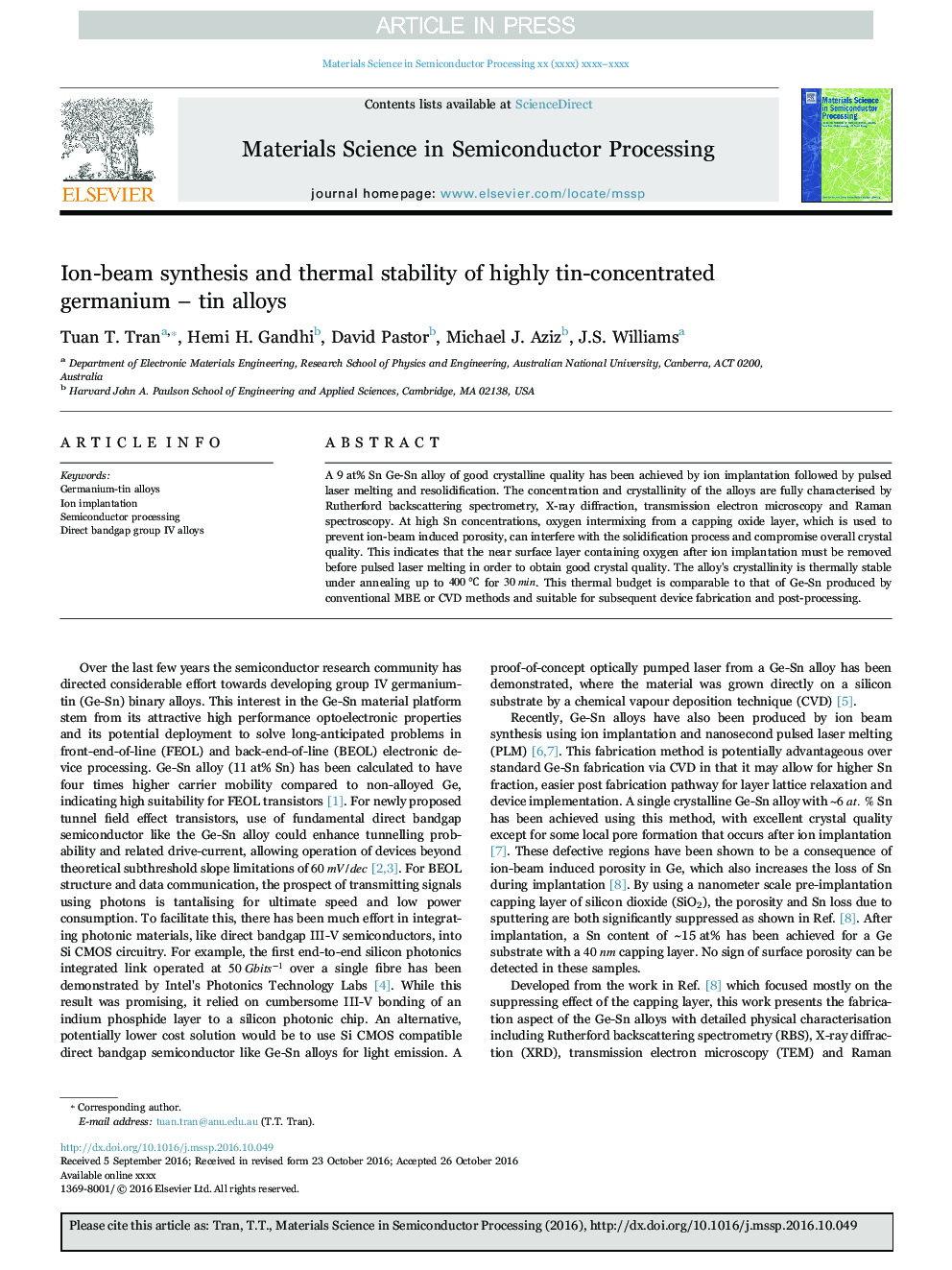| Article ID | Journal | Published Year | Pages | File Type |
|---|---|---|---|---|
| 5006177 | Materials Science in Semiconductor Processing | 2017 | 4 Pages |
Abstract
A 9Â at%Â Sn Ge-Sn alloy of good crystalline quality has been achieved by ion implantation followed by pulsed laser melting and resolidification. The concentration and crystallinity of the alloys are fully characterised by Rutherford backscattering spectrometry, X-ray diffraction, transmission electron microscopy and Raman spectroscopy. At high Sn concentrations, oxygen intermixing from a capping oxide layer, which is used to prevent ion-beam induced porosity, can interfere with the solidification process and compromise overall crystal quality. This indicates that the near surface layer containing oxygen after ion implantation must be removed before pulsed laser melting in order to obtain good crystal quality. The alloy's crystallinity is thermally stable under annealing up to 400â for 30min. This thermal budget is comparable to that of Ge-Sn produced by conventional MBE or CVD methods and suitable for subsequent device fabrication and post-processing.
Related Topics
Physical Sciences and Engineering
Engineering
Electrical and Electronic Engineering
Authors
Tuan T. Tran, Hemi H. Gandhi, David Pastor, Michael J. Aziz, J.S. Williams,
